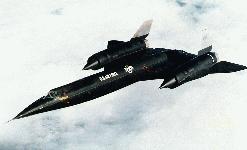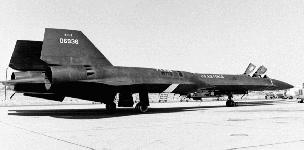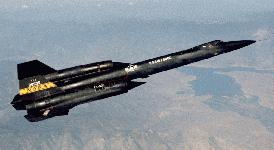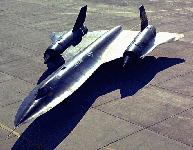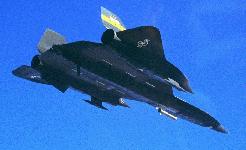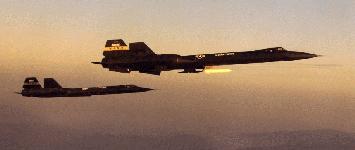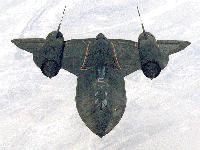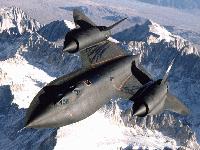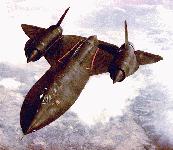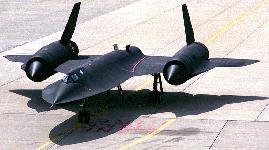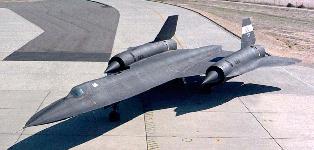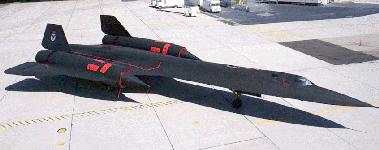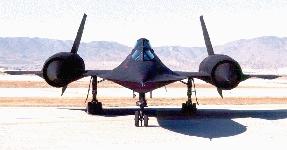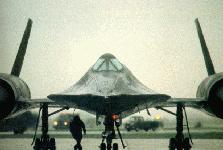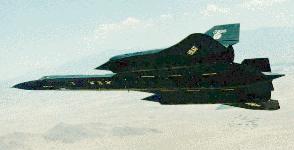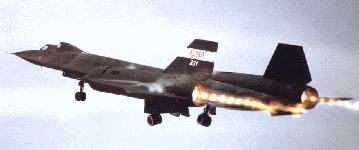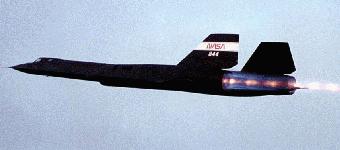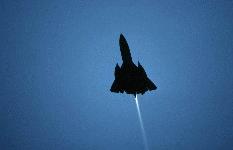Aircraft
|
| Tail # | MODEL | Disposition |
|---|
| 60-6924 | A-12 | Blackbird Airpark, Palmdale, CA (AFFTC Museum) |
| 60-6925 | A-12 | Intrepid Sea-Air-Space Museum, NY |
| 60-6926 | A-12 | crashed 24 May 1963, CIA pilot ejected safely |
| 60-6927 | A-12 | Museum of Science/Industry, LA (Stored at Skunk Works) |
| 60-6928 | A-12 | crashed 05 January 1967, CIA pilot killed |
| 60-6929 | A-12 | crashed 28 December 1967, pilot ejected safely |
| 60-6930 | A-12 | Alabama Space and Rocket Center, Huntsville |
| 60-6931 | A-12 | CIA Headquarters Museum (formerly at Minnesota ANG Museum, St Paul, MN |
| 60-6932 | A-12 | crashed 5 June 1968, CIA pilot killed |
| 60-6933 | A-12 | San Diego Aerospace Museum |
| 60-6934 | YF-12A | destroyed on landing 14 August 1966 |
| 60-6935 | YF-12A | USAF Museum, Dayton, OH |
| 60-6936 | YF-12A | crashed 24 June 1971, crew ejected safely |
| 60-6937 | A-12 | Storage, Plant 42 (Skunk Works) |
| 60-6938 | A-12 | USS Alabama Battleship Memorial Park, Mobile, AL |
| 60-6939 | A-12 | destroyed on landing 9 July 1964, crew ejected safely |
| 60-6940 | A-12 | Museum of Flight, Seattle |
| 60-6941 | M-12 | crashed 30 July 1966 , pilot survived, LCO killed |
| 61-7971 | SR-71A | Evergreen Aviation Museum, Oregon |
| 64-17950 | SR-71A | destroyed on takeoff 11 April 1969, crew ejected safely |
| 64-17951 | SR-71A | Pima Air Museum, Tucson, AZ (NASA YF-12C 937) |
| 64-17952 | SR-71A | crashed 25 January 1966, pilot survived, RSO killed |
| 64-17953 | SR-71A | crashed 18 December 1969, crew ejected safely |
| 64-17954 | SR-71A | destroyed on takeoff 11 April 1969, crew ejected safely |
| 64-17955 | SR-71A | AFFTC Museum, Edwards AFB, CA |
| 64-17956 | SR-71B | Air Zoo, Kalamazoo, MI |
| 64-17957 | SR-71B | crashed 11 January 1968, crew ejected safely |
| 64-17958 | SR-71A | Robbins AFB Museum, GA |
| 64-17959 | SR-71A | Air Force Armament Museum, Eglin AFB, FL |
| 64-17960 | SR-71A | Castle Air Museum, Merced, CA |
| 64-17961 | SR-71A | Kansas Cosmosphere & Space Center, Hutchinson, KS |
| 64-17962 | SR-71A | Reserve Fleet, Plant 42, Palmdale, CA |
| 64-17963 | SR-71A | Beale AFB Museum, CA |
| 64-17964 | SR-71A | Strategic Air & Space Museum, Ashland, NE |
| 64-17965 | SR-71A | crashed 25 October 1967, crew ejected safely |
| 64-17966 | SR-71A | crashed 13 April 1967, crew ejected safely |
| 64-17967 | SR-71A | Operational (USAF), Det 2, 9th SW, Edwards AFB, CA |
| 64-17968 | SR-71A | Virginia Aviation Museum |
| 64-17969 | SR-71A | crashed 10 May 1970, crew ejected safely |
| 64-17970 | SR-71A | crashed 17 June 1970, crew ejected safely |
| 64-17971 | SR-71A | Operational (USAF), Det 2, 9th SW, Edwards AFB, CA |
| 64-17972 | SR-71A | National Air and Space Museum, Washington D.C. |
| 64-17973 | SR-71A | Blackbird Airpark, Palmdale, CA (Det 1 ASC) |
| 64-17974 | SR-71A | crashed 21 April 1989, crew ejected safely |
| 64-17975 | SR-71A | March Field Museum, March AFB, CA |
| 64-17976 | SR-71A | USAF Museum, Dayton, OH |
| 64-17977 | SR-71A | destroyed in takeoff accident 10 October 1968 |
| 64-17978 | SR-71A | destroyed in landing accident 20 July 1972 |
| 64-17979 | SR-71A | History & Traditions Museum, Lackland AFB, TX |
| 64-17980 | SR-71A | Operational, NASA Dryden FRC, Edwards AFB, CA |
| 64-17981 | SR-71C | Hill AFB Museum, Hill AFB, UT |
| | SR-71A | American Air Museum, Duxford, United Kingdom |
SOURCES:
Blackbird Survivors - Where are they?
Blackbird Family Losses List
|
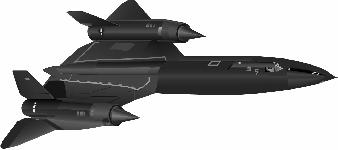 The SR-71 was designed by a team of Lockheed personnel led by Clarence
"Kelly" Johnson, at that time vice president of the company's Advanced
Development Projects, known as the "Skunk Works."
The first version, a CIA reconnaissance aircraft that first flew in April 1962 was called the A-11. Upon retrofitting with J-58 engine, it was designated the A-12. An interceptor version was developed in 1963 under the designation YF-12A. A USAF reconnaissance variant, called the SR-71, was first flown in 1964. The A-12 and SR-71 designs included leading and trailing edges made of high-temperature fiberglass-asbestos laminates which among other features contributed to their reduced radar signature.
Its existence
was publicly announced by President Lyndon Johnson on Feb. 29, 1964,
when he announced that an SR-71 had flown at sustained speeds of over
2000 mph during tests at Edwards, Calif.
The SR-71 was designed by a team of Lockheed personnel led by Clarence
"Kelly" Johnson, at that time vice president of the company's Advanced
Development Projects, known as the "Skunk Works."
The first version, a CIA reconnaissance aircraft that first flew in April 1962 was called the A-11. Upon retrofitting with J-58 engine, it was designated the A-12. An interceptor version was developed in 1963 under the designation YF-12A. A USAF reconnaissance variant, called the SR-71, was first flown in 1964. The A-12 and SR-71 designs included leading and trailing edges made of high-temperature fiberglass-asbestos laminates which among other features contributed to their reduced radar signature.
Its existence
was publicly announced by President Lyndon Johnson on Feb. 29, 1964,
when he announced that an SR-71 had flown at sustained speeds of over
2000 mph during tests at Edwards, Calif.


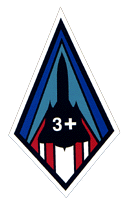 The Air Force needed technical assistance to get the latest reconnaissance version of the A-12 family, the SR-71A, fully operational. Eventually, the Air Force offered NASA the use of two YF-12A aircraft, 60-6935 and 606936. A joint NASA-USAF program was mapped out in June 1969.
The NASA YF-12 research program was ambitious; the aircraft flew an average of once a week unless down for extended maintenance or modification. It made 90 flights between 16 July 1971 and 22 December 1978.
The Air Force needed technical assistance to get the latest reconnaissance version of the A-12 family, the SR-71A, fully operational. Eventually, the Air Force offered NASA the use of two YF-12A aircraft, 60-6935 and 606936. A joint NASA-USAF program was mapped out in June 1969.
The NASA YF-12 research program was ambitious; the aircraft flew an average of once a week unless down for extended maintenance or modification. It made 90 flights between 16 July 1971 and 22 December 1978.
